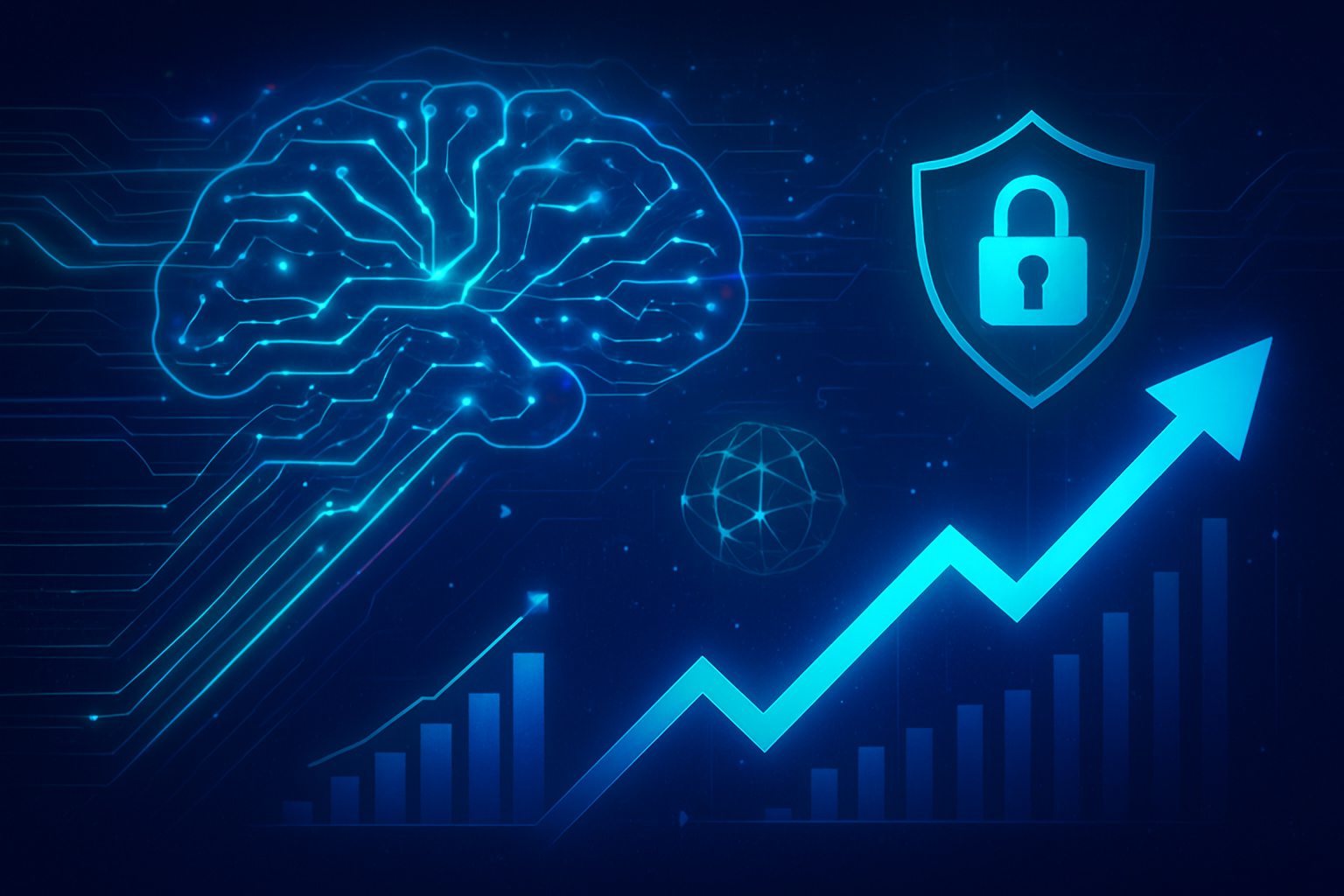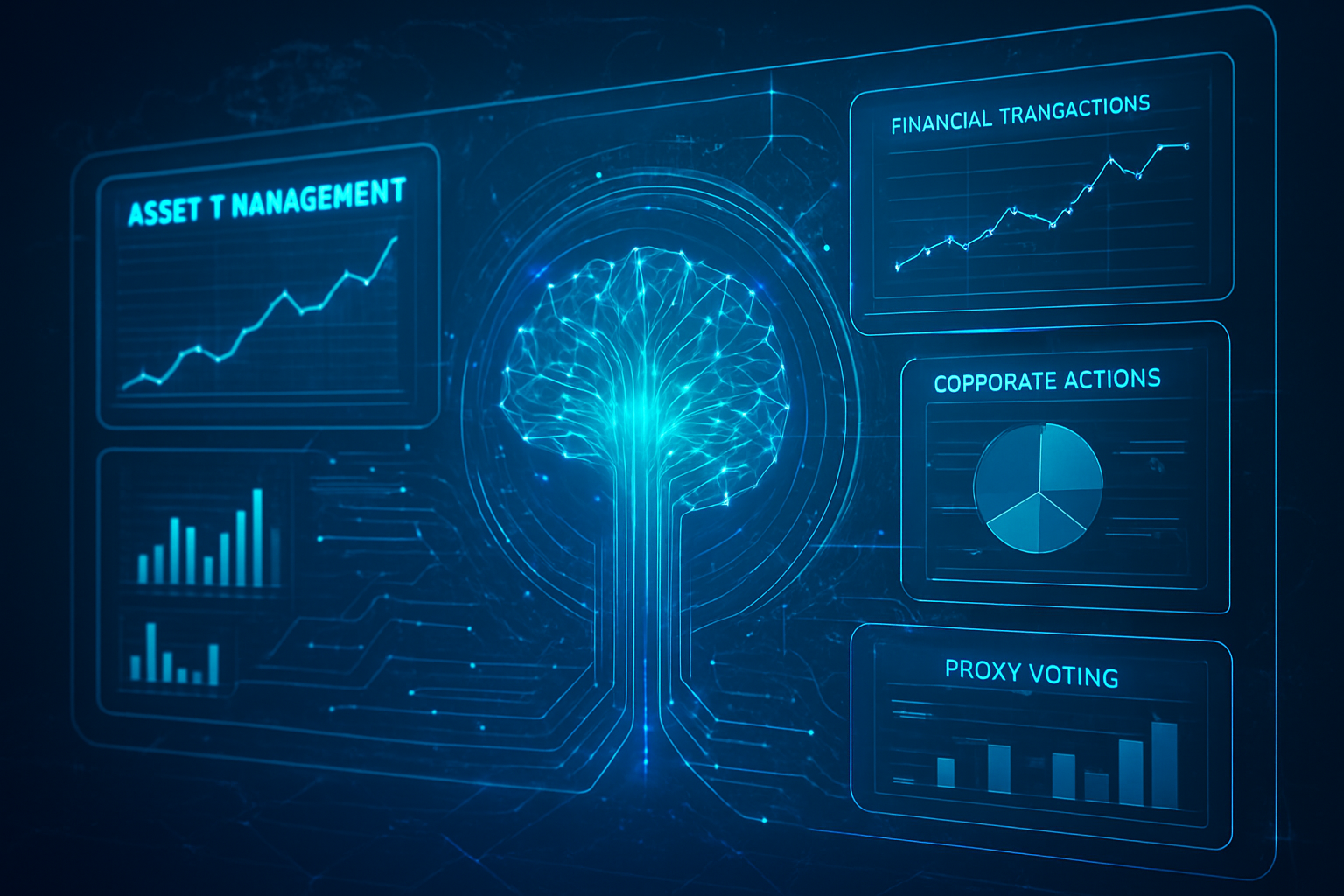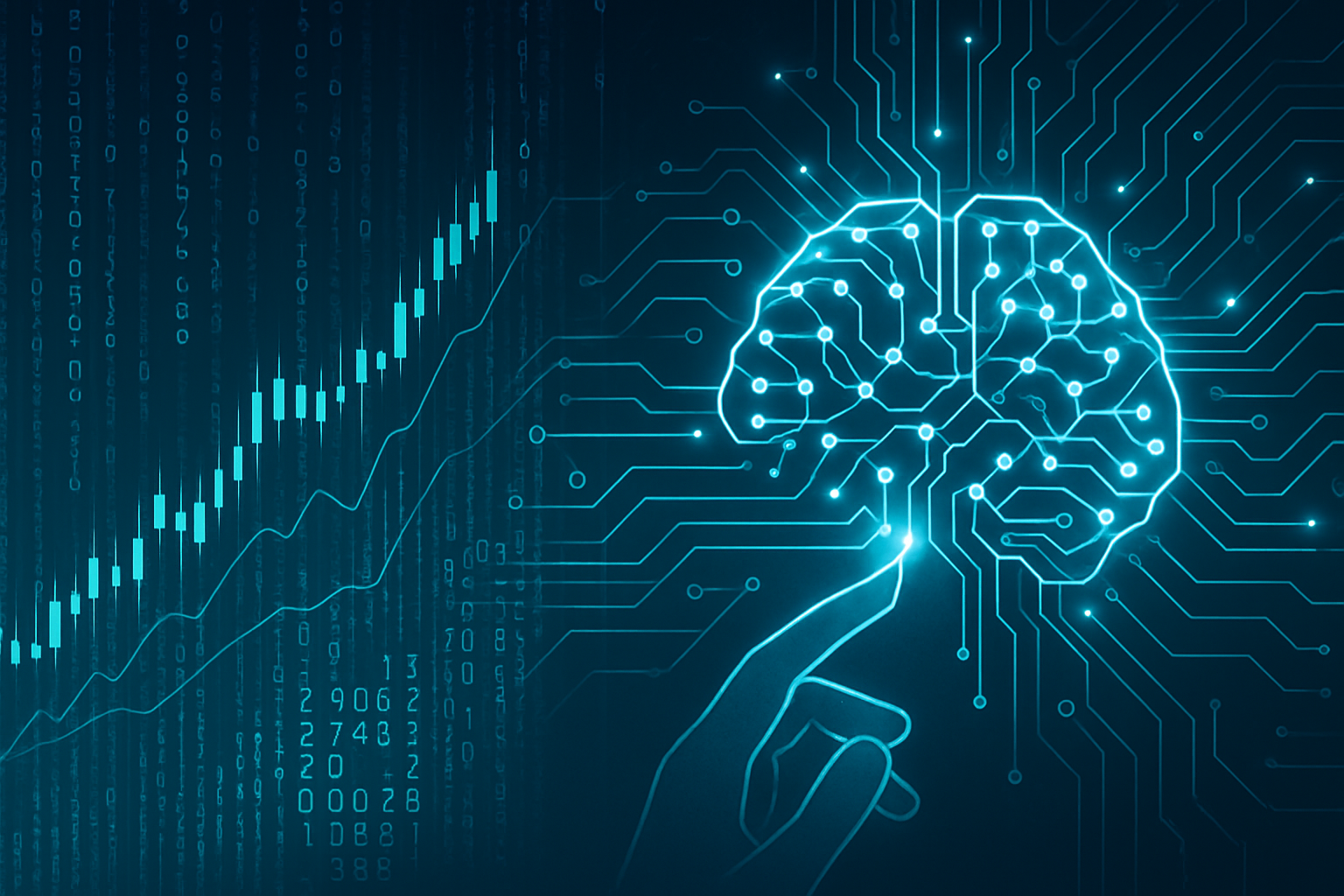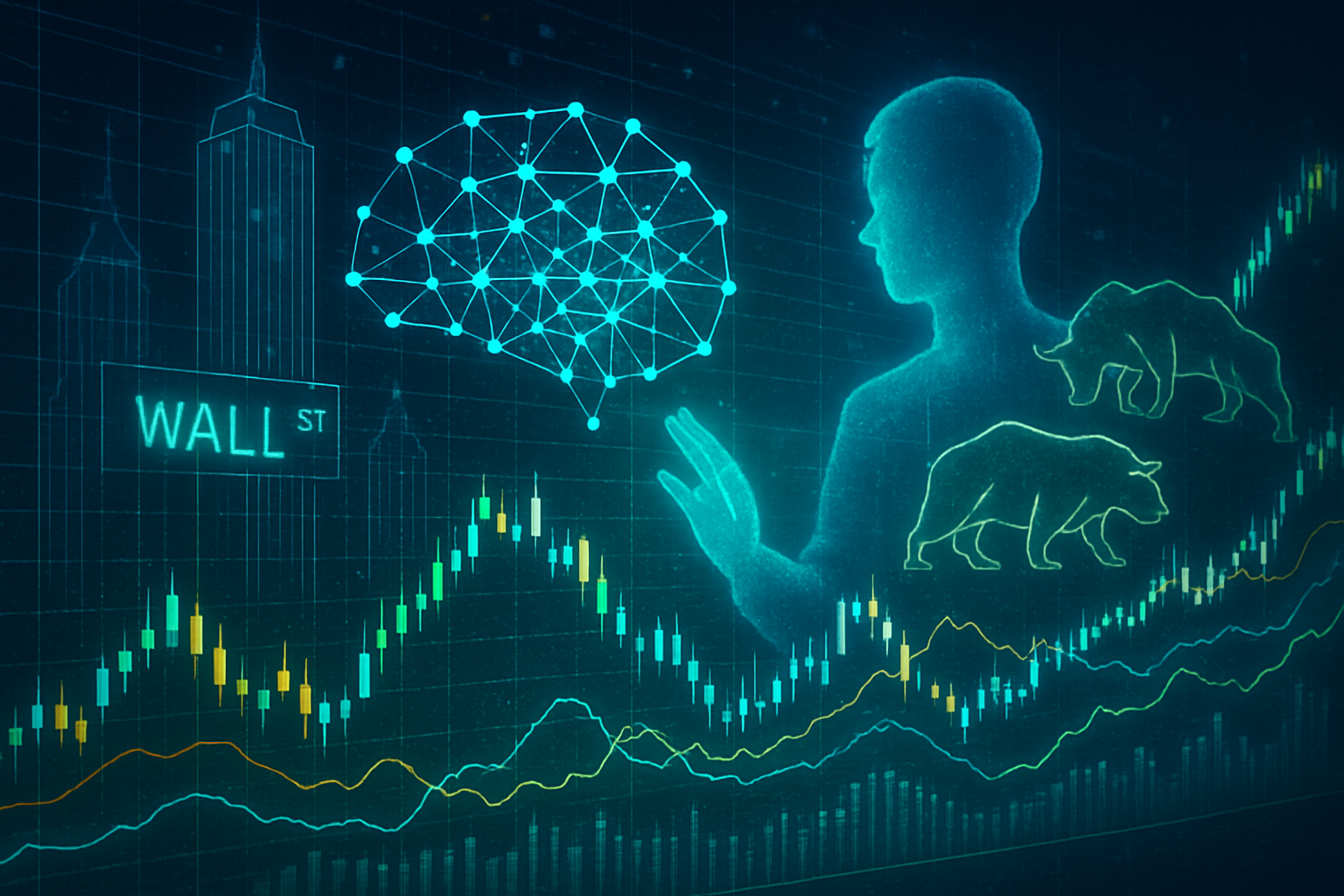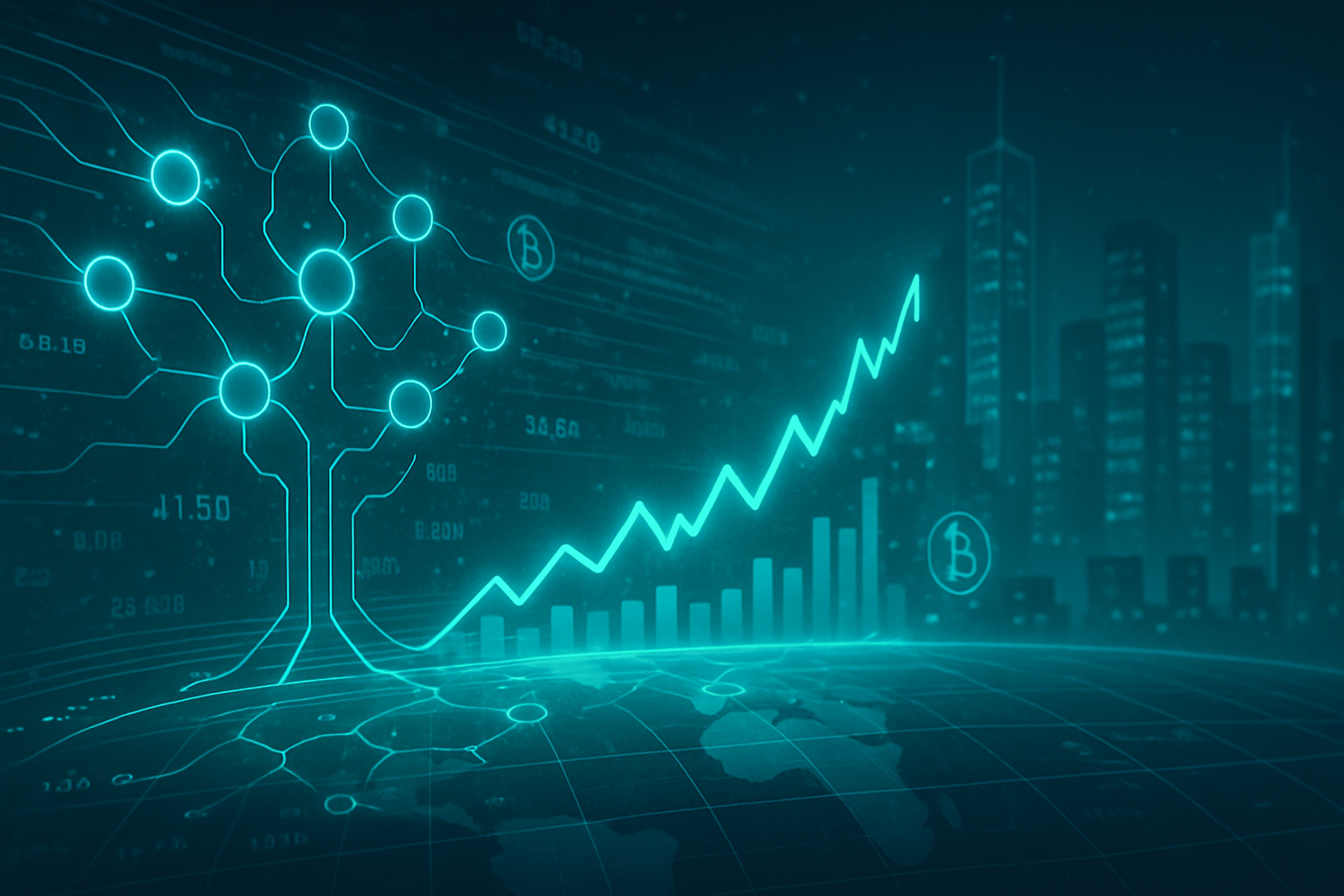The financial technology (Fintech) landscape is on the cusp of a profound transformation, with Artificial Intelligence (AI) poised to drive unprecedented growth. Recent market projections indicate that the global AI in Fintech market is expected to surge to an astonishing US$ 70.3 billion by 2033. This represents a monumental leap from its current valuation, underscoring AI's pivotal role in reshaping the future of banking, investment, and financial services worldwide.
This explosive growth is not merely a forecast but a reflection of the deep integration of AI across critical financial functions. From fortifying defenses against sophisticated fraud to crafting hyper-personalized banking experiences and revolutionizing algorithmic trading, AI is rapidly becoming an indispensable backbone of the financial sector. The immediate significance of this projection lies in its signal to financial institutions: adapt or risk obsolescence. AI is no longer a futuristic concept but a present-day imperative, driving efficiency, enhancing security, and unlocking new avenues for revenue and customer engagement.
AI's Technical Revolution in Finance: Beyond Automation
The projected ascent of the AI in Fintech market is underpinned by concrete technical advancements that are fundamentally altering how financial operations are conducted. At its core, AI's transformative power in finance stems from its ability to process, analyze, and derive insights from vast datasets at speeds and scales unattainable by human analysts or traditional rule-based systems. This capability is particularly evident in three critical areas: fraud detection, personalized banking, and algorithmic trading.
In fraud detection, AI leverages sophisticated machine learning (ML) algorithms, including neural networks and deep learning models, to identify anomalous patterns in real-time transaction data. Unlike older, static rule-based systems that could be easily bypassed by evolving fraud tactics, AI systems continuously learn and adapt. They analyze millions of data points—transaction amounts, locations, times, recipient information, and historical user behavior—to detect subtle deviations that signify potential fraudulent activity. For instance, a sudden large international transaction from an account that typically makes small, local purchases would immediately flag the AI, even if it falls within a user's spending limit. This proactive, adaptive approach significantly reduces false positives while catching a higher percentage of genuine fraud, leading to substantial savings for institutions and enhanced security for customers. Companies like Mastercard (NYSE: MA) and IBM (NYSE: IBM) have already collaborated to integrate IBM's Watson AI into Mastercard's fraud management tools, demonstrating this shift.
Personalized banking, once a niche offering, is becoming a standard expectation thanks to AI. AI-powered analytics process customer data—spending habits, financial goals, risk tolerance, and life events—to offer tailored products, services, and financial advice. This includes everything from customized loan offers and investment portfolio recommendations to proactive alerts about potential overdrafts or savings opportunities. Natural Language Processing (NLP) drives intelligent chatbots and virtual assistants, providing 24/7 customer support, answering complex queries, and even executing transactions, thereby enhancing customer experience and loyalty. The technical capability here lies in AI's ability to segment customers dynamically and predict their needs, moving beyond generic demographic-based recommendations to truly individual financial guidance.
Algorithmic trading has been revolutionized by AI, moving beyond simple quantitative models to incorporate predictive analytics and reinforcement learning. AI algorithms can analyze market sentiment from news feeds, social media, and economic reports, identify complex arbitrage opportunities, and execute high-frequency trades with unparalleled speed and precision. These systems can adapt to changing market conditions, learn from past trading outcomes, and optimize strategies in real-time, leading to potentially higher returns and reduced risk. For example, AI can identify intricate correlations between seemingly unrelated assets or predict market movements based on micro-fluctuations that human traders would miss. Goldman Sachs (NYSE: GS) Investment Group's launch of Marquee, an AI-powered trading platform, exemplifies this technical shift towards more sophisticated, AI-driven trading strategies.
These advancements collectively represent a paradigm shift from traditional, reactive financial processes to proactive, intelligent, and adaptive systems. The difference lies in AI's capacity for continuous learning, pattern recognition in unstructured data, and real-time decision-making, which fundamentally surpasses the limitations of previous rule-based or human-centric approaches.
Competitive Battleground: Who Stands to Gain (and Lose)
The projected boom in the AI in Fintech market is setting the stage for an intense competitive landscape, with significant implications for established tech giants, innovative startups, and traditional financial institutions alike. Companies that effectively harness AI will solidify their market positions, while those that lag risk significant disruption.
Tech giants like Google (NASDAQ: GOOGL), Amazon (NASDAQ: AMZN), and Microsoft (NASDAQ: MSFT) are poised to be major beneficiaries. Their cloud computing platforms (Google Cloud, AWS, Azure) provide the essential infrastructure for AI development and deployment in finance. Financial institutions are increasingly migrating their data and operations to these cloud environments, often leveraging the AI services offered by these providers. Recent partnerships, such as UniCredit's 10-year MoU with Google Cloud for digital transformation and Apex Fintech Solutions' collaboration with Google Cloud to modernize capital markets technology, underscore this trend. These tech behemoths also possess vast R&D capabilities in AI, allowing them to develop and offer advanced AI tools, from specialized machine learning models to comprehensive AI platforms, directly to the financial sector.
Specialized AI Fintech startups are also critical players, often focusing on niche solutions that can be rapidly scaled. These agile companies are developing innovative AI applications for specific problems, such as hyper-personalized lending, AI-driven credit scoring for underserved populations, or advanced regulatory compliance (RegTech) solutions. Their ability to innovate quickly and often partner with or be acquired by larger financial institutions or tech companies positions them for significant growth. The competitive implication here is that traditional banks that fail to innovate internally will increasingly rely on these external partners or risk losing market share to more technologically advanced competitors, including challenger banks built entirely on AI.
Traditional financial institutions (e.g., banks, asset managers, insurance companies) face a dual challenge and opportunity. They possess invaluable customer data and established trust, but often struggle with legacy IT infrastructure and slower adoption cycles. Those that successfully integrate AI into their core operations—as exemplified by Goldman Sachs' Marquee platform or Sage's plans to use AWS AI services for accounting—will gain significant strategic advantages. These advantages include reduced operational costs through automation, enhanced customer satisfaction through personalization, superior risk management, and the ability to develop new, data-driven revenue streams. Conversely, institutions that resist AI adoption risk becoming less competitive, losing customers to more agile fintechs, and struggling with higher operational costs and less effective fraud prevention. The market positioning will increasingly favor institutions that can demonstrate robust AI capabilities and a clear AI strategy.
The potential for disruption is immense. AI can disintermediate traditional financial services, allowing new entrants to offer superior, lower-cost alternatives. For example, AI-driven robo-advisors can provide investment management at a fraction of the cost of human advisors, potentially disrupting wealth management. Similarly, AI-powered credit scoring can challenge traditional lending models, expanding access to credit while also requiring traditional lenders to re-evaluate their own risk assessment methodologies. The strategic advantage will ultimately lie with companies that can not only develop powerful AI but also seamlessly integrate it into their existing workflows and customer experiences, demonstrating a clear return on investment.
The Broader AI Landscape: Reshaping Finance and Society
The projected growth of AI in Fintech is not an isolated phenomenon but a critical component of the broader AI revolution, reflecting deeper trends in data utilization, automation, and intelligent decision-making across industries. This financial transformation has significant implications for the wider economy, societal structures, and even ethical considerations.
Within the broader AI landscape, the financial sector's embrace of AI highlights the increasing maturity and practical application of advanced machine learning techniques. The ability of AI to handle massive, complex, and often sensitive financial data demonstrates a growing trust in these technologies. This trend aligns with the broader push towards data-driven decision-making seen in healthcare, manufacturing, retail, and logistics. The financial industry, with its stringent regulatory requirements and high stakes, serves as a powerful proving ground for AI's robustness and reliability.
The impacts extend beyond mere efficiency gains. AI in Fintech can foster greater financial inclusion by enabling new credit scoring models that assess individuals with limited traditional credit histories. By analyzing alternative data points—such as utility payments, mobile phone usage, or even social media behavior (with appropriate ethical safeguards)—AI can provide access to loans and financial services for previously underserved populations, particularly in developing economies. This has the potential to lift millions out of poverty and stimulate economic growth.
However, the rapid adoption of AI also brings potential concerns. Job displacement is a significant worry, as AI automates many routine financial tasks, from data entry to customer service and even some analytical roles. While AI is expected to create new jobs requiring different skill sets, a societal challenge lies in managing this transition and retraining the workforce. Furthermore, the increasing reliance on AI for critical financial decisions raises questions about algorithmic bias. If AI models are trained on biased historical data, they could perpetuate or even amplify discriminatory practices in lending, insurance, or credit scoring. Ensuring fairness, transparency, and accountability in AI algorithms is paramount, necessitating robust regulatory oversight and ethical AI development frameworks.
Compared to previous AI milestones, such as the early expert systems or the rise of rule-based automation, today's AI in Fintech represents a leap in cognitive capabilities. It's not just following rules; it's learning, adapting, and making probabilistic decisions. This is akin to the shift from simple calculators to sophisticated predictive analytics engines. The sheer scale of data processing and the complexity of patterns AI can discern mark a new era, moving from assistive technology to truly transformative intelligence. The current date of 11/5/2025 places us firmly in the midst of this accelerating adoption curve, with many of the recent announcements from 2024 and early 2025 indicating a strong, continuing trend.
The Road Ahead: Innovations and Challenges on the Horizon
As the AI in Fintech market hurtles towards its US$ 70.3 billion valuation by 2033, the horizon is dotted with anticipated innovations and formidable challenges that will shape its trajectory. Experts predict a future where AI becomes even more deeply embedded, moving beyond current applications to power truly autonomous and predictive financial ecosystems.
In the near-term, we can expect significant advancements in hyper-personalized financial advisory services. AI will move beyond recommending products to proactively managing personal finances, anticipating needs, and even executing financial decisions on behalf of users (with explicit consent and robust safeguards). This could manifest as AI agents that dynamically rebalance investment portfolios based on market shifts and personal goals, or automatically optimize spending and savings to meet future objectives. The integration of AI with advanced biometric authentication and blockchain technologies is also on the horizon, promising enhanced security and immutable transaction records, further bolstering trust in digital financial systems.
Generative AI, specifically Large Language Models (LLMs) and Small Language Models (SLMs), will play an increasingly vital role. Beyond chatbots, LLMs will be used to analyze complex financial documents, generate market reports, assist in due diligence for mergers and acquisitions, and even draft legal contracts, significantly reducing the time and cost associated with these tasks. Sage's plans to use AWS AI services for tailored LLMs in accounting is a prime example of this emerging application.
Looking further ahead, quantum computing's integration with AI could unlock unprecedented capabilities in financial modeling, risk assessment, and cryptographic security, though this remains a longer-term prospect. AI-powered decentralized finance (DeFi) applications could also emerge, offering peer-to-peer financial services with enhanced transparency and efficiency, potentially disrupting traditional banking structures even further.
However, the path forward is not without its challenges. Regulatory frameworks must evolve rapidly to keep pace with AI's advancements, addressing issues of data privacy, algorithmic accountability, market manipulation, and consumer protection. The development of robust explainable AI (XAI) systems is crucial, especially in finance, where understanding why an AI made a particular decision is vital for compliance and trust. Cybersecurity threats will also become more sophisticated, requiring continuous innovation in AI-powered defense mechanisms. Finally, the talent gap in AI expertise within the financial sector remains a significant hurdle, necessitating massive investment in education and training. Experts predict that successful navigation of these challenges will determine which institutions truly thrive in the AI-driven financial future.
The Dawn of Intelligent Finance: A Comprehensive Wrap-up
The projected growth of the global AI in Fintech market to US$ 70.3 billion by 2033 marks a definitive turning point in the history of finance. This isn't merely an incremental improvement but a fundamental re-architecture of how financial services are conceived, delivered, and consumed. The key takeaways are clear: AI is no longer optional; it is the strategic imperative for survival and growth in the financial sector. Its prowess in fraud detection, personalized banking, and algorithmic trading is already transforming operations, driving efficiencies, and enhancing customer experiences, laying the groundwork for an even more intelligent future.
This development holds immense significance in the broader narrative of AI history. It represents a mature application of AI in one of the most regulated and critical industries, demonstrating the technology's capability to handle high-stakes environments with precision and adaptability. The shift from rule-based systems to continuously learning, adaptive AI models signifies a leap in artificial intelligence's practical utility, moving from theoretical promise to tangible, economic impact. This milestone underscores AI's role not just as a tool, but as a core engine of innovation and competitive differentiation.
In the long term, the pervasive integration of AI is expected to democratize access to sophisticated financial tools, foster greater financial inclusion globally, and create a more resilient and responsive financial system. However, realizing this positive vision hinges on proactive engagement with the accompanying challenges: developing ethical AI, establishing clear regulatory guardrails, ensuring data privacy, and upskilling the workforce.
In the coming weeks and months, watch for continued strategic partnerships between tech giants and financial institutions, further announcements of AI-powered product launches, and evolving regulatory discussions around AI governance in finance. The journey towards an AI-first financial world is well underway, and its unfolding will undoubtedly be one of the most compelling stories of the decade.
This content is intended for informational purposes only and represents analysis of current AI developments.
TokenRing AI delivers enterprise-grade solutions for multi-agent AI workflow orchestration, AI-powered development tools, and seamless remote collaboration platforms.
For more information, visit https://www.tokenring.ai/.
